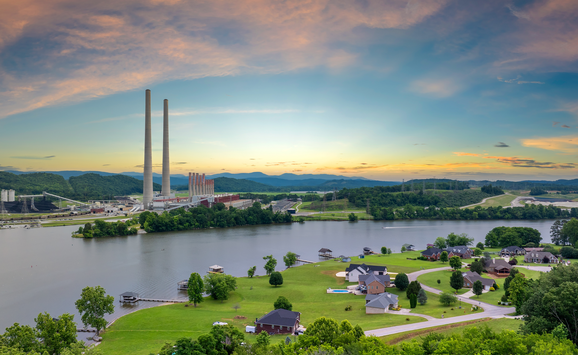Whether the medium is the message comes to mind, once again, in press coverage of a wide-ranging new energy study. The report in question is Energy in Transition: 1985-2010, the final report of the Committee on Nuclear and Alternative Energy Systems (CONAES) of the National Research Council—National Academy of Sciences.
The front-page New York Times account reported that the study's central conclusion is that “conservation in the form of improved energy efficiency offers the greatest potential for easing the nation's long-range energy problems.” The Times story went on to say that “as for nonnuclear energy supplies, the study concludes that conventional oil and gas production will continue to decline in the United States as the resource base is depleted; that coal, despite its abundance, will grow only modestly in the years ahead because of health, safety and environmental problems; and that only a huge and costly push by the Government would lead to rapid growth in solar-related energy sources...”
In its editorial comment on these matters, the Times viewed things somewhat differently from its reporter: “The academy's pessimism on solar energy is offset by bullishness on nuclear and coal power. The academy acknowledges an array of environmental and practical problems with each, but believes these can be overcome. Coal and nuclear are the only economic alternatives for generating electricity in the near future... and if the electricity they produce can produce some oil or gas, they may also ease future shortages of fluid fuel.”
In a reverse-switch on the Times' perceptions, the Washington Post's page-one version was headlined “Energy Analysis Stresses Use of Coal, Atom Power,” although the ensuing account altered that single-minded perspective a bit when it cited the study's judgment that “next to demand growth reduction, highest priority should be given to the development of a domestic synthetic fuels industry for both liquids and gas.” The Post reporter went on to underscore the academy's emphasis on the coal and nuclear power option, including continued development of a breeder reactor. The Post editorial staff veered to the Time's front-page report in pointing to what appeared to be the study's “most important conclusion: managing energy demand rather than supply is the key to energy policy. No other activity affords such sorely needed room for maneuver.”
What is the public to make of these different press accounts and perceptions? Perhaps newspaper reporters and editorial writers cannot be expected to be any more immune to occasional differences in emphasis and touches of subjectivity than the rest of humanity, including academics.
Also, a truly voluminous report such as the CONAES study, which deals with a multiplicity of topics and alternative strategies, must be the nightmare of a headline writer: can you imagine a surviving headline which reads “Blue-Ribbon Panel Counsels Balanced, Multi-pronged Energy Strategy”? In fact, such balanced counsel can be ascribed to the CONAES report. In their transmittal letter to National Research Council Chairman Philip Handler, CONAES cochairmen Harvey Brooks and Edward L. Ginzton say: “Reducing the growth of energy demand should be accorded the highest priority in national energy policy ... The possibility of reducing the nation's energy/GNP ratio should serve as a strong stimulus to strong conservation efforts. It should not, however, be taken as a dependable basis for foregoing simultaneous and vigorous efforts n the supply programs discussed in this report.”
What is also puzzling about the sets of newspaper observations touched on here is that only the Post's editorial noted one of the most striking aspects of the CONAES study: the long list of dissents, reservations, and amplifications appended throughout the report by committee members. This is most unusual for a National Academy study. It could signify that even a group of preeminent social and physical scientists is itself so divided ideologically on energy questions as to impede ready agreement on “objective” realities; or that those realities are, in fact, so shrouded in uncertainty (as in, say, the issue of nuclear power risks and benefits) as to defy a consensual response. Or some of both.





